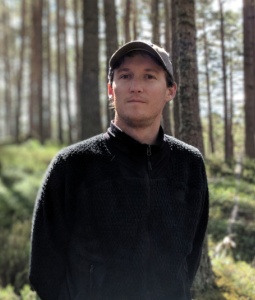School of the Earth, Ocean and Environment
Faculty and Staff Directory
Robert Dunn
| Title: | Research Assistant Professor Research Coordinator at the North Inlet - Winyah Bay National Estuarine Research Reserve |
| College of Arts and Sciences | |
| Email: | robert@baruch.sc.edu |
| Phone: | 843-904-9026 |
| Office: |
Office: Baruch Marine Field Lab 206
Lab: Baruch Marine Field Lab 121
|
| Resources: |

In addition to my appointment as a Research Assistant Professor within the Baruch Institute for Marine and Coastal Sciences, I co-advise graduate students through U of SC's School of the Earth, Ocean and Environment. I am also the Research Coordinator at the North Inlet - Winyah Bay National Estuarine Research Reserve in Georgetown, South Carolina. I'm responsible for facilitating research within the Reserve, helping run the System-Wide Monitoring Program (SWMP), and developing my own research group. If you're interested in collaborating, have questions about North Inlet, or want to visit the Reserve for field work, don't hesitate to get in touch!
Dunn & Hovel. 2020. Predator type influences the frequency of functional responses to prey in marine habitats. Biology Letters 16(2): 20190758. DOI: 10.1098/rsbl.2019.0758
Dunn & Hovel. 2019. Experiments reveal limited top-down control of key herbivores in southern California kelp forests. Ecology 100(3): e02625. DOI: 10. 1002/ecy.2625
Dunn, Altieri, Miller, Yeager, Hovel. 2018. Contrasting behavioral responses to predatory risk cues reflect different foraging strategies in two Caribbean sea urchins.
Marine Ecology Progress Series 604: 187-198. DOI: 10.3354/meps12733
Dunn, Altieri, Miller, Yeager, Hovel. 2017. Coral identity and structural complexity drive habitat associations and demographic processes for an increasingly important Caribbean herbivore.
Marine Ecology Progress Series 577:33-47. DOI: 10.3354/meps12230
Dunn, Baskett, Hovel. 2017. Interactive effects of predator and prey harvest on ecological resilience of rocky reefs. Ecological Applications 27(6):1718-1730. DOI: 10.1002/eap.1581
*Dunn. 2016. Tool use by a temperate wrasse, California sheephead Semicossyphus pulcher.
Journal of Fish Biology 88(2): 805-810. DOI: 10.1111/jfb.12856 *Featured on BBC Earth Blue Planet II: These are the world’s smartest fish
Dunn, Eggleston, Lindquist. 2014. Effects of substrate type on demographic rates of eastern oyster (Crassostrea virginica). Journal of Shellfish Research 33(1): 177-185. DOI: 10.2983/035.033.0117
Roosenburg, Spontak, Sullivan, Matthews, Heckman, Trimbath, Dunn, Dustman, Smith, and Graham. 2014. Nesting habitat creation enhances recruitment in a predator-free environment: Malaclemys nesting at the Paul S. Sarbanes Ecosystem Restoration Project. Restoration Ecology 22(6):815-823. DOI: 10.1111/rec.12147